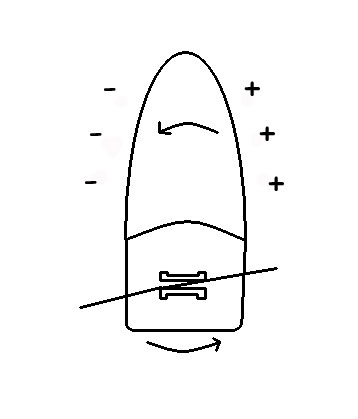How Braces Move Teeth (Video)
The way the body produces tooth movement is quite an amazing and complicated process. It involves many different tissues, cells, and cell signaling substances. When a force is applied to the roots of the teeth through the braces and the wire, cells in the bone and tissues surrounding the root are stimulated to act. Cells in the body called Osteoblasts and Osteoclasts add and remove bone, respectively.
Pressure at the bracket produces pressure and tension (pulling) at the root of the tooth, causing remodeling of bone and tooth movement. This type of force combination is called a couple, which is defined as two equal and opposite forces acting on a mass.
A couple is a necessary way to move teeth since the braces are attached at the crowns of the teeth, and not at their center of resistance. The center of resistance would be the most ideal position from which to apply forces and move teeth. However, the center of resistance is located at the roots and would therefore be an impossible place to attach a bracket and apply a force.

There is a time lag from the moment pressure and forces are applied until actual tooth movement occurs. The delay in tooth movement is mainly due to how the body removes bone adjacent to the tooth. Bone is many times not removed immediately next to the tooth, but rather a distance away from the root. Therefore it may take the cells a period of 1-2 weeks before bone is removed close to the tooth.
After the initial phase of nearly no tooth movement, the bone then undergoes significant changes, and the tooth begins to move more rapidly. This will usually occur over the next 2-3 weeks, and is also dependant on the amount of force still active on the tooth.
While there are other factors involved in determining the frequency of appointments, the process just described is often the basis for how often appointments are made. Early in treatment, the orthodontist may use a flexible wire that also has a longer activation time. The wire provides a way to keep a gentle force active over a long period of time. Therefore, appointments could be scheduled anywhere from 4-12 weeks apart. Later in treatment, as the wires become less flexible, the time between appointments may be scheduled 4-6 weeks apart for more frequent activation and to keep the forces active.
The length of orthodontic treatment is also related to how the teeth move. There are many variables that may contribute to variation in the length of treatment, including growth, cooperation, and differences in the speed of tooth movement. However, since there is a biological limit on the rate of movement, many patients that have similar problems with crowding and a bite that is off will tend to have similar treatment times.